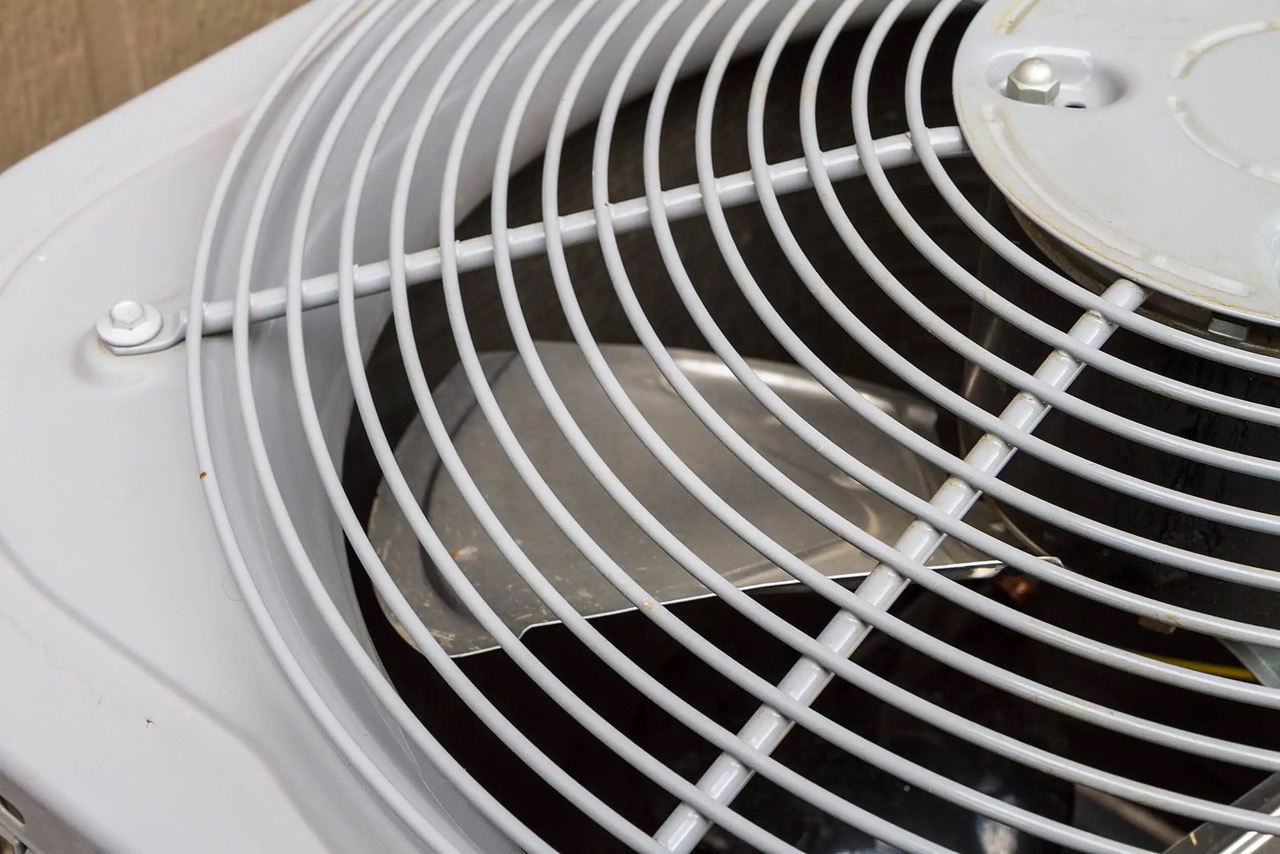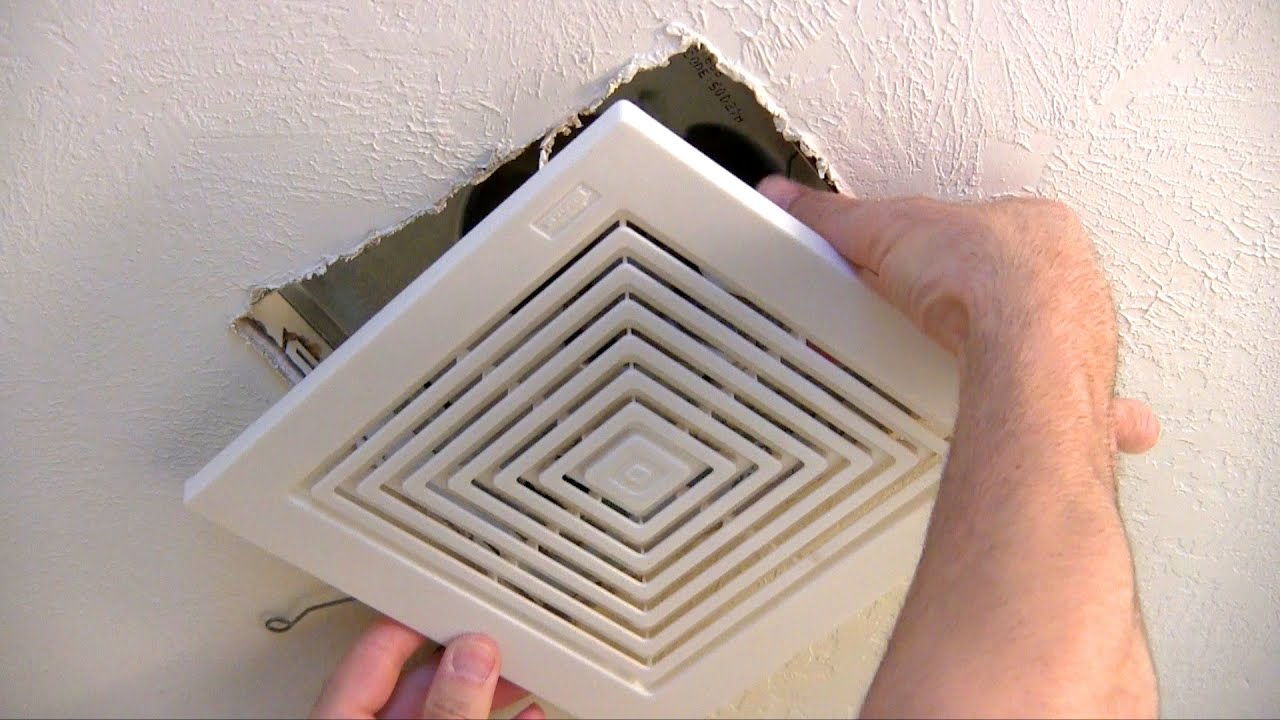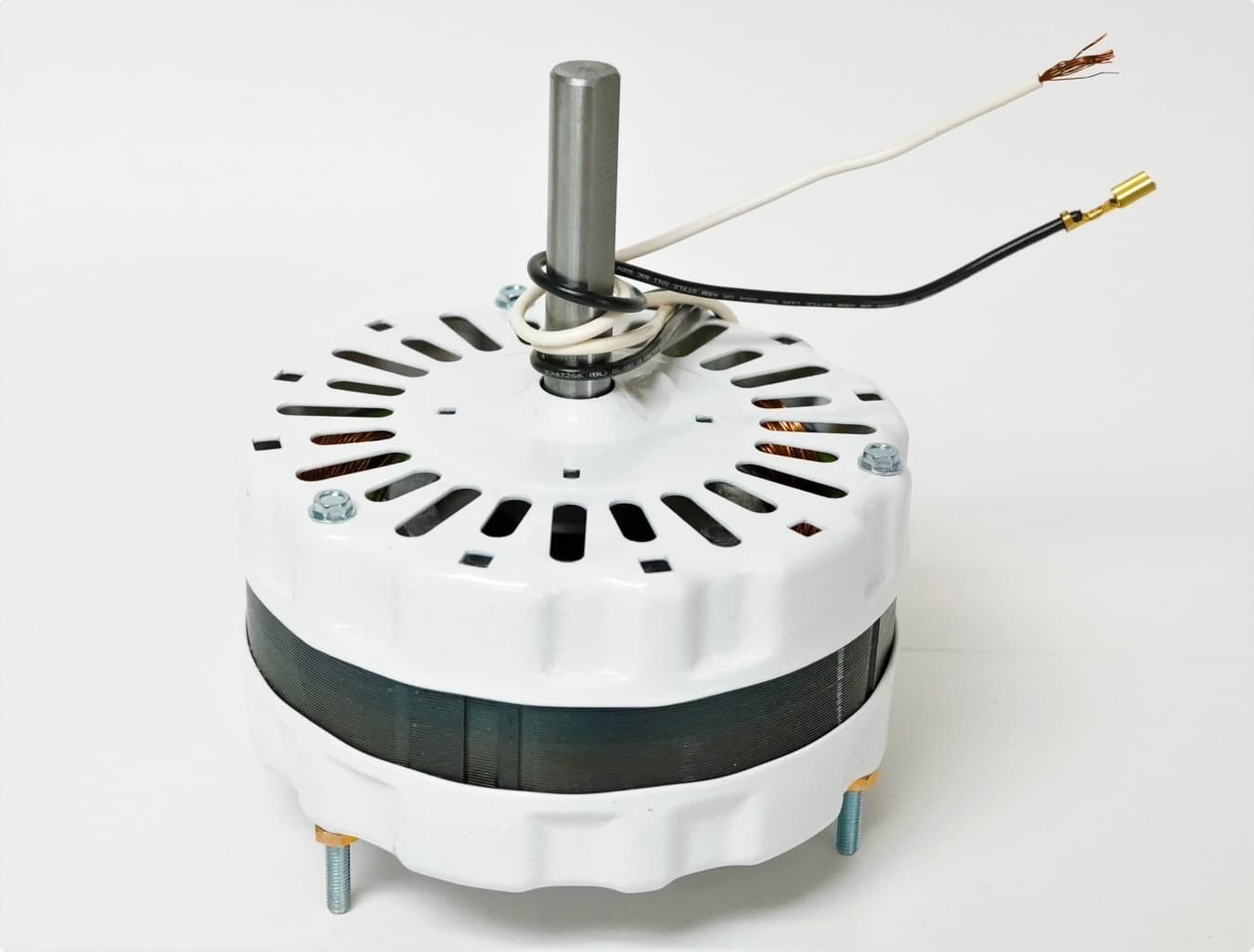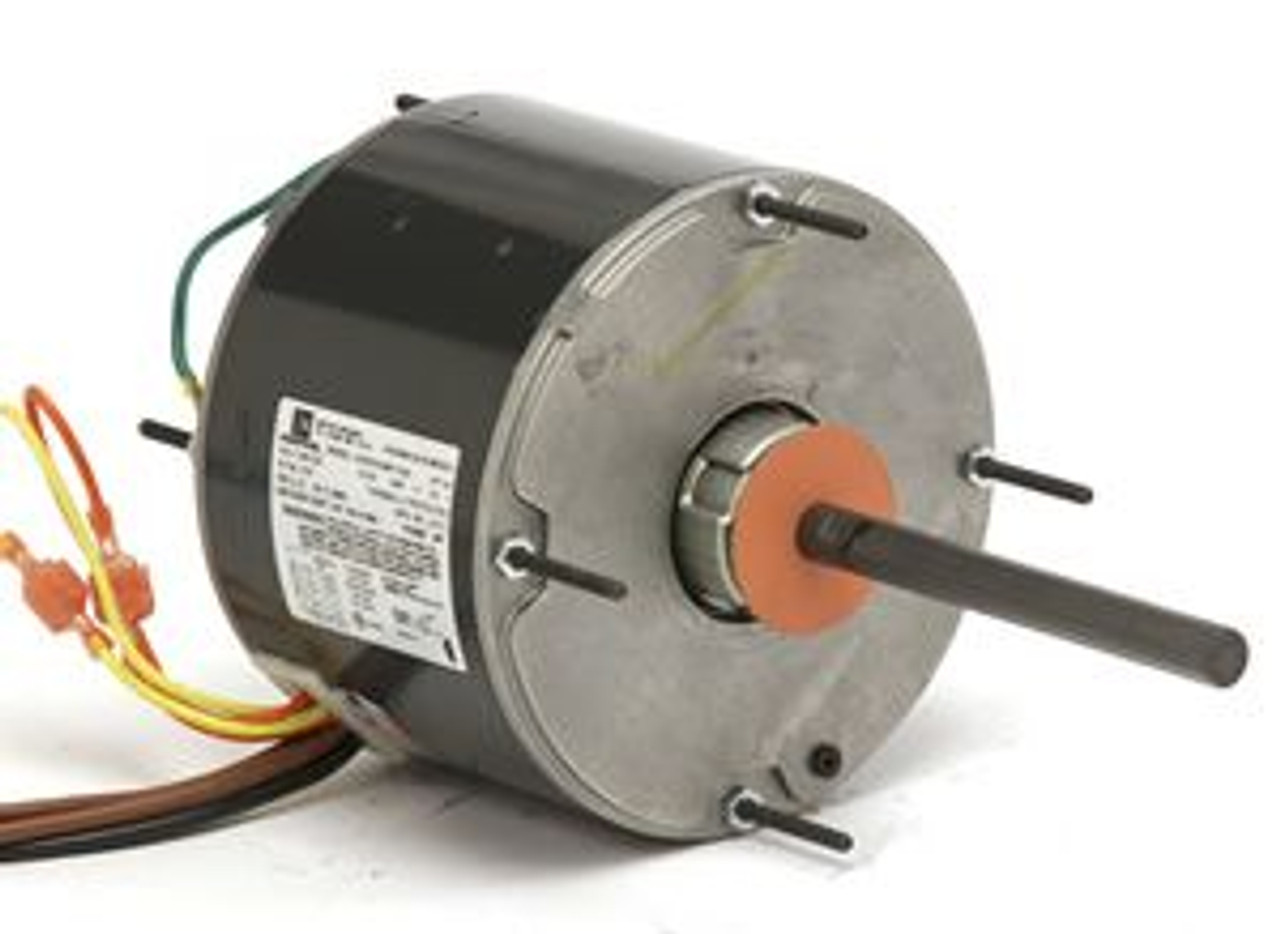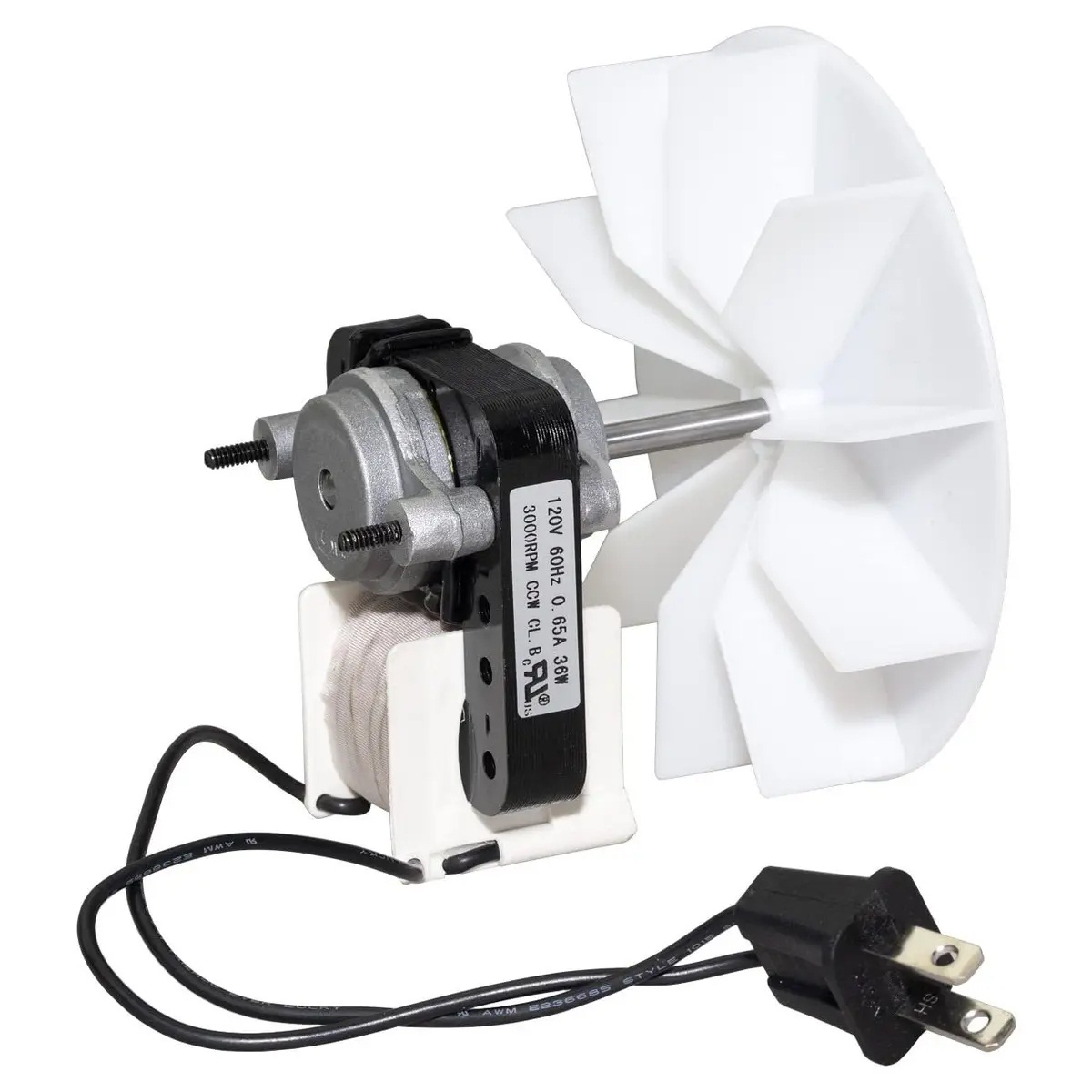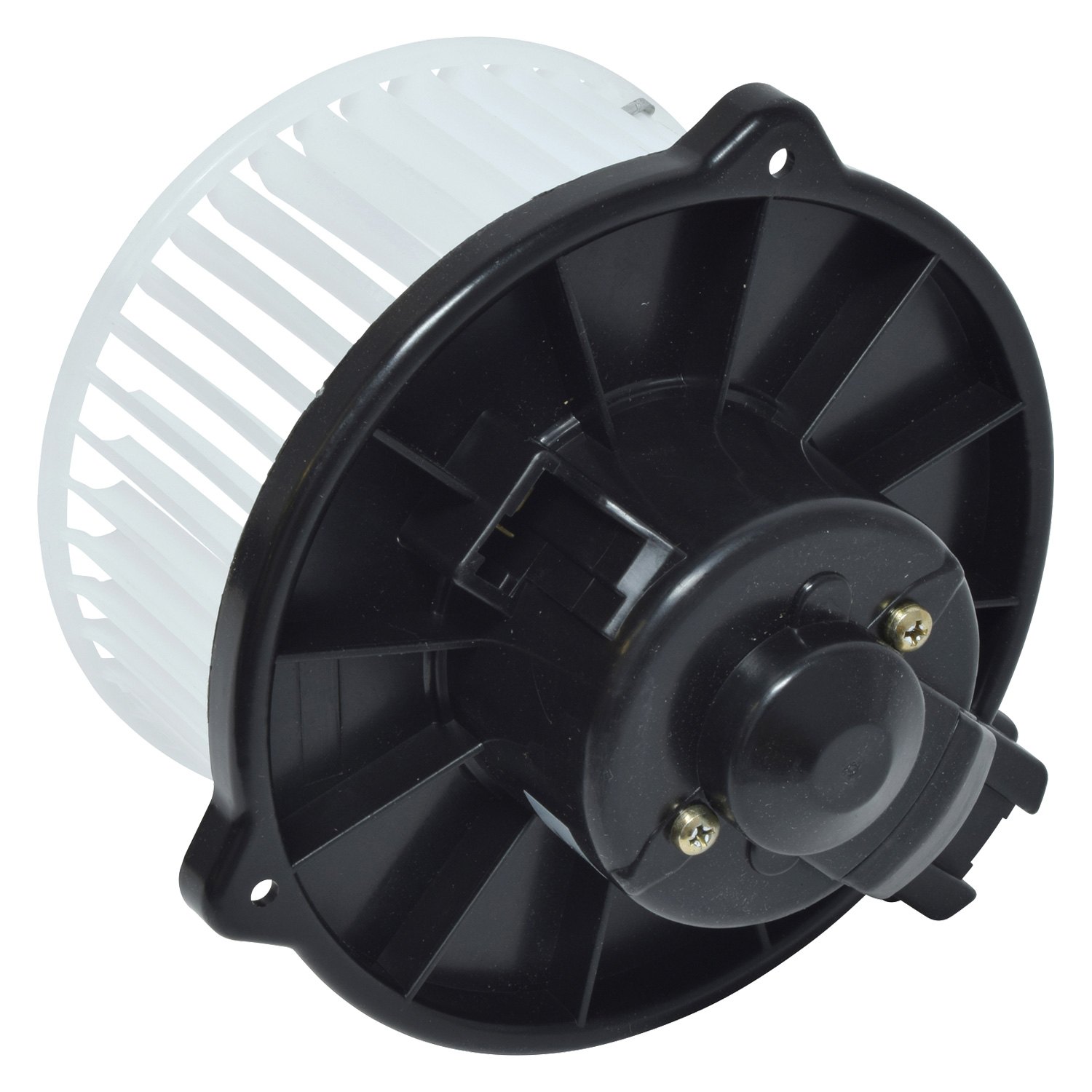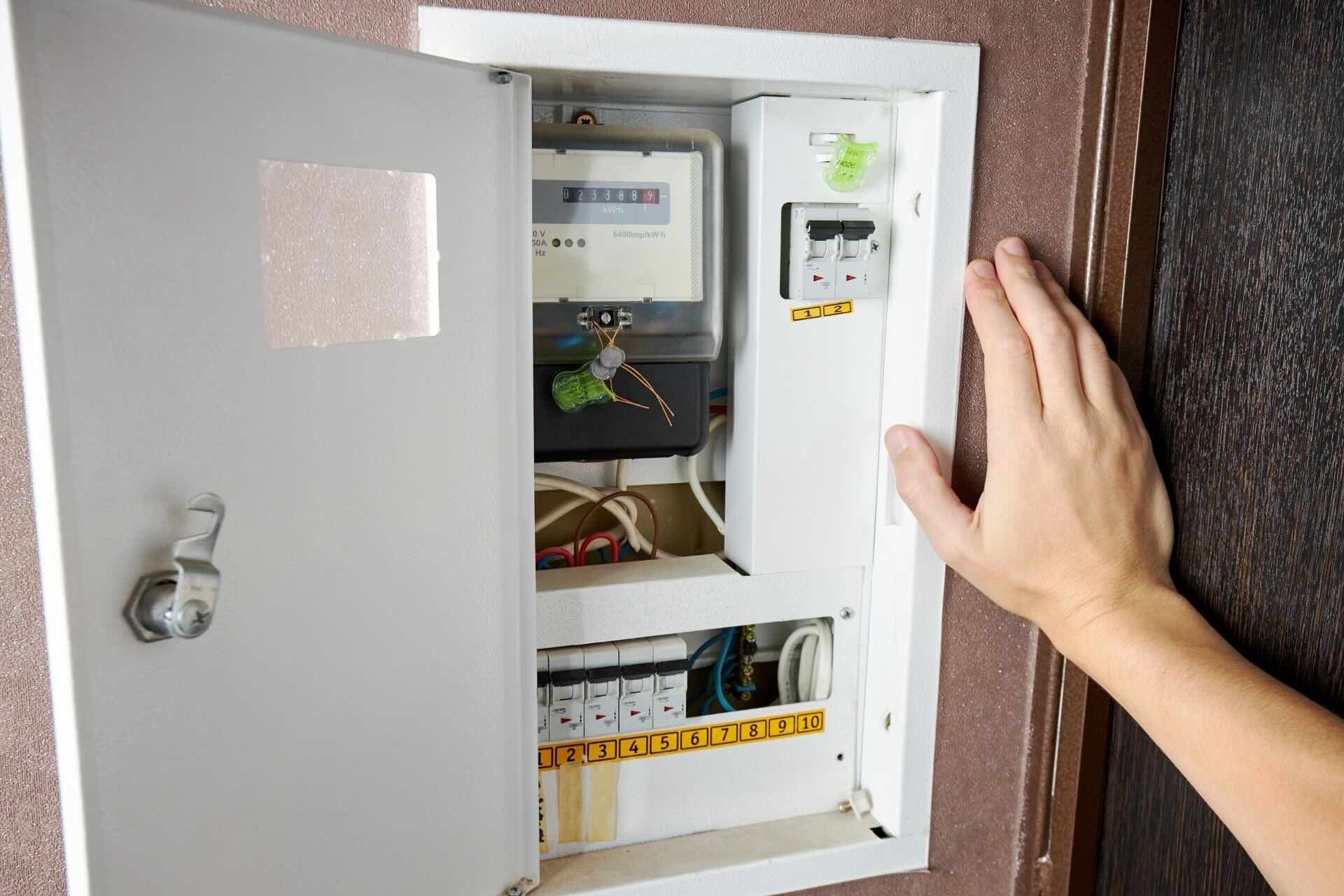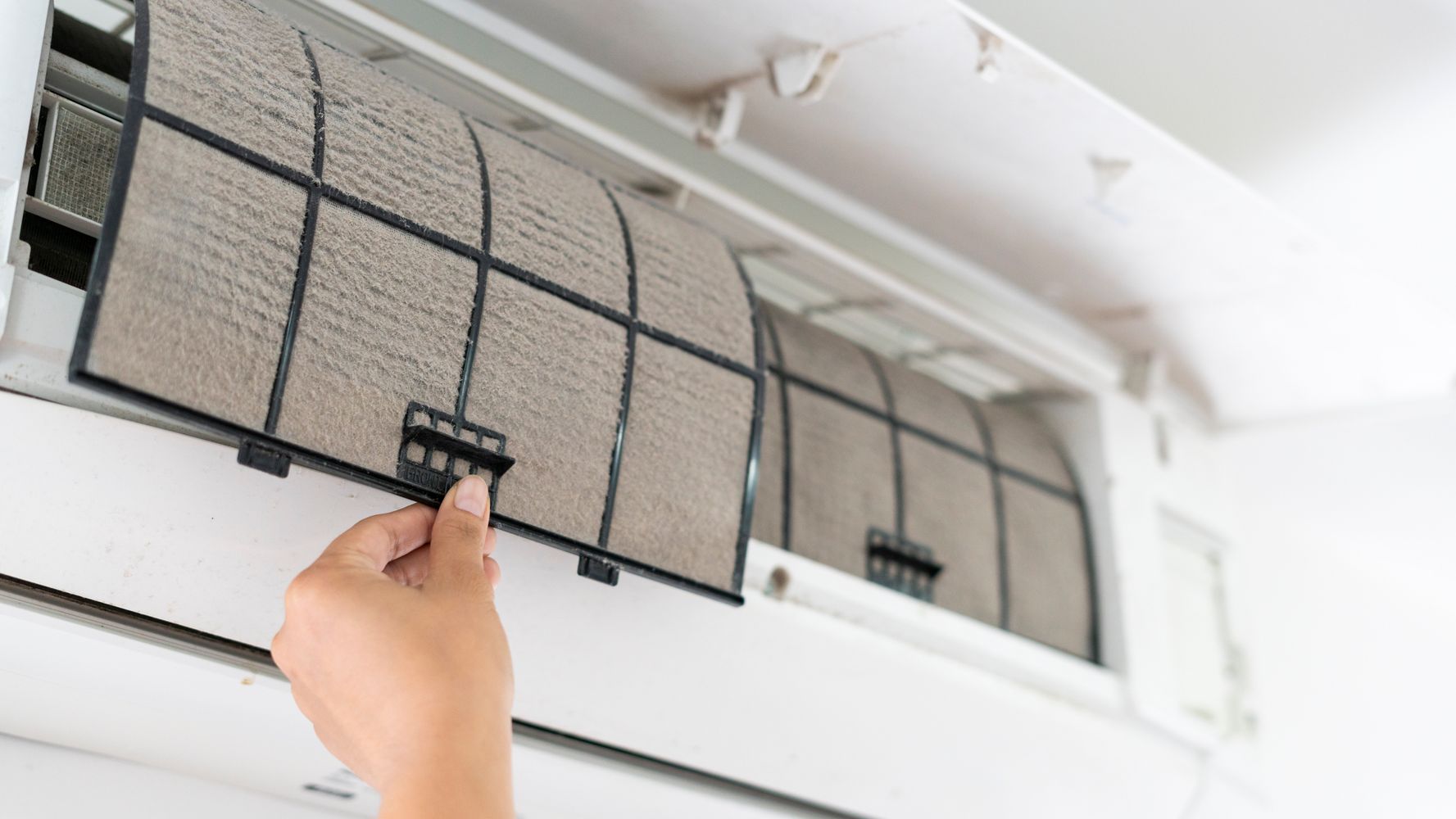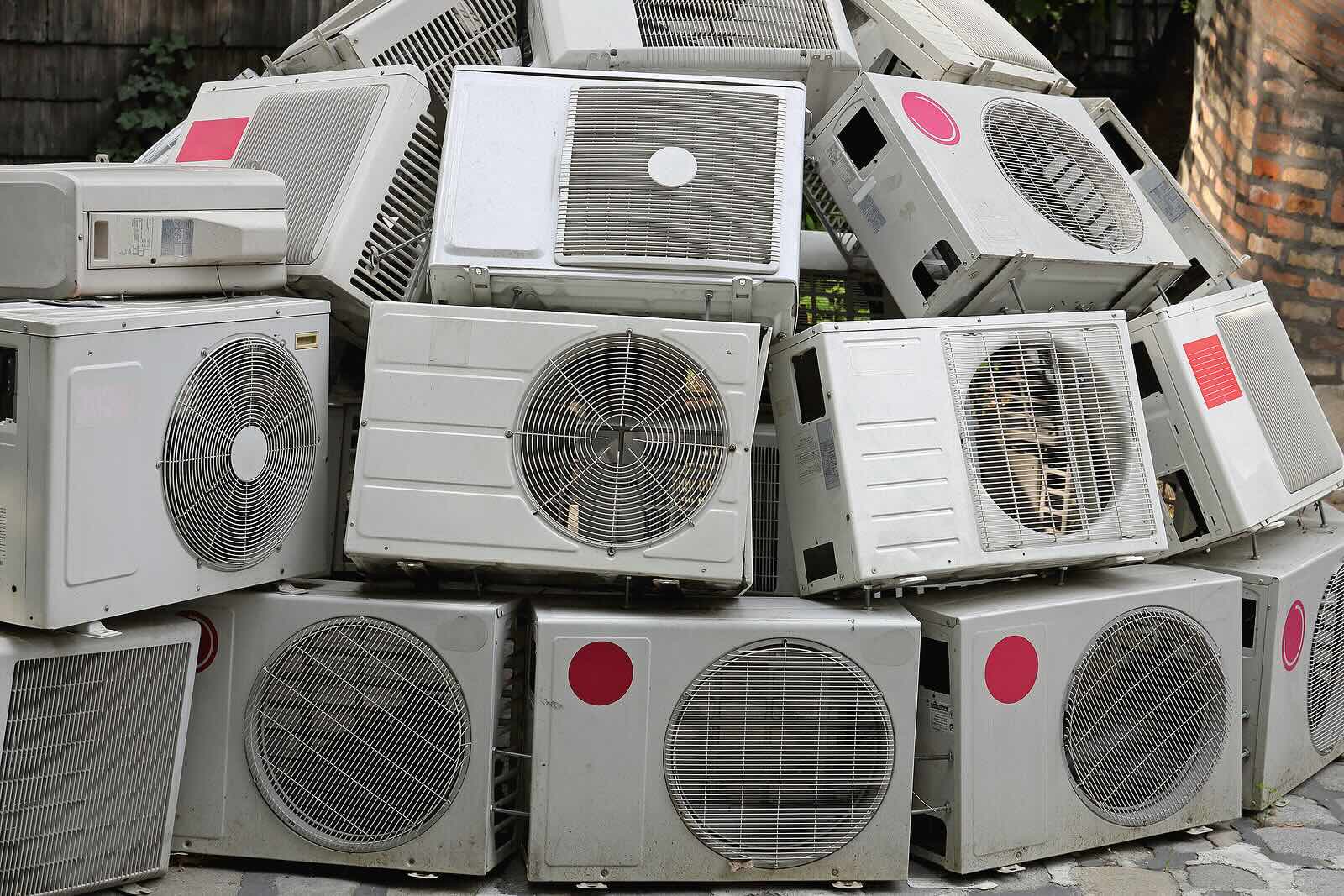Home>Home Maintenance>Where Is The Fan Motor On An Air Conditioner


Home Maintenance
Where Is The Fan Motor On An Air Conditioner
Modified: October 21, 2024
Looking for the fan motor in your air conditioner? Learn about its location and how to maintain it with our helpful home maintenance tips.
(Many of the links in this article redirect to a specific reviewed product. Your purchase of these products through affiliate links helps to generate commission for Storables.com, at no extra cost. Learn more)
Introduction
Welcome to the world of home maintenance! As homeowners, we know that taking care of your property is essential for its longevity and your comfort. One crucial aspect of home maintenance is understanding how the various systems that keep your house running smoothly operate. In this article, we’re going to delve into the world of air conditioning systems and specifically explore the fan motor.
An air conditioner is a complex system that relies on several components working in harmony to cool your home. Among these components, the fan motor plays a vital role in circulating air and maintaining a comfortable indoor environment. Understanding where the fan motor is located within the air conditioner system is not only valuable for maintenance purposes but also for troubleshooting any potential issues that may arise.
In this article, we will guide you through the process of finding the fan motor in both the indoor and outdoor units of your air conditioner. We’ll also provide some helpful tips for identifying the fan motor and offer maintenance and care suggestions to ensure its optimal performance. Lastly, we’ll discuss common fan motor issues and troubleshooting techniques to address any problems that may arise.
So, let’s dive in and unravel the mystery of where the fan motor is in your air conditioner, and empower you with the knowledge you need to keep your system running smoothly!
Key Takeaways:
- The fan motor in your air conditioner is like the heart of the system, circulating air to keep your home cool. It’s located in both the indoor and outdoor units, and regular cleaning and maintenance are essential to keep it running smoothly.
- If your air conditioner’s fan motor encounters issues like noisy operation or weak airflow, you can troubleshoot by checking the power supply, cleaning or replacing air filters, and removing any obstructions. Seeking professional help is recommended for persistent issues.
Understanding the Air Conditioner System
To comprehend the location of the fan motor in an air conditioner, it’s essential to have a basic understanding of how the entire system operates. An air conditioner consists of several key components that work together to provide cool air and maintain a comfortable indoor temperature.
One of the most crucial elements of the air conditioning system is the fan motor. This motor controls the movement of air within the unit and plays a vital role in ensuring the efficient operation of the entire system.
The air conditioner system typically consists of two units: the indoor unit and the outdoor unit. The indoor unit comprises the evaporator coil, the air handler, and the blower fan, while the outdoor unit houses the condenser coil, the compressor, and the outdoor fan.
The fan motor, located in both the indoor and outdoor units, is responsible for circulating air throughout the system. In the indoor unit, the fan motor blows air past the evaporator coil, which transfers heat from the indoors to the outdoors. This cooled air is then distributed throughout your home via the air ducts and vents.
In the outdoor unit, the fan motor helps remove heat from the condenser coil, allowing the system to expel hot air into the atmosphere. By drawing outdoor air over the condenser coil, the fan motor assists in dissipating the heat absorbed from the indoor air, completing the cooling cycle.
Without the fan motor, the air conditioner system would be unable to circulate air effectively, resulting in poor cooling performance and potential damage to the components. Therefore, it is crucial to understand the importance of the fan motor and its role in maintaining the efficiency of your air conditioning system.
In the following sections, we will explore the precise locations of the fan motor in both the indoor and outdoor units of an air conditioner, providing you with the knowledge needed to identify and maintain this essential component of your system.
Location of the Fan Motor in an Air Conditioner
Now that we understand the significance of the fan motor in an air conditioner, let’s explore its precise location within both the indoor and outdoor units. Familiarizing yourself with the placement of the fan motor will not only help you identify it easily but also enable you to perform necessary maintenance tasks and troubleshoot any issues that may arise.
Exploring the Indoor Unit
In the indoor unit, the fan motor is typically located within the air handler or blower compartment. The air handler is responsible for circulating conditioned air throughout your home, and the fan motor is a crucial component of this process.
To locate the fan motor in the indoor unit, you will need to access the air handler cabinet. In most systems, this cabinet is located in a dedicated utility closet, attic space, or basement. You may need to remove a cover or access panel to expose the internal components of the air handler.
Finding the Fan Motor in the Indoor Unit
Once you have access to the air handler cabinet, visually locate the fan motor. It is typically situated near the blower fan assembly, which consists of the fan blades and the motor that drives them.
The fan motor is easily identifiable by its cylindrical shape and electrical wiring connections. It is usually mounted on a bracket or within a motor housing, depending on the design of the air handler. In some cases, the fan motor may be attached to the blower wheel, which is a component that moves air through the air handler.
Examining the Outdoor Unit
In the outdoor unit of the air conditioner, the fan motor is located within the condenser unit. The condenser unit is responsible for facilitating the release of heat absorbed from the indoor air.
To locate the fan motor in the outdoor unit, you will need to access the condenser unit, which is typically located on the exterior of your home. The condenser unit contains various components, including the condenser coil, compressor, and the fan motor.
Locating the Fan Motor in the Outdoor Unit
The fan motor in the outdoor unit is generally situated in close proximity to the condenser coil. It assists in drawing outdoor air over the coil, aiding in the dissipation of heat absorbed from the indoor air.
When examining the condenser unit, look for a fan assembly comprising fan blades and a motor. The motor is similar in appearance to the one in the indoor unit, with electrical wiring connections and mounting brackets.
Identifying the fan motor in the outdoor unit will help you perform maintenance tasks such as cleaning and lubrication, and it will also aid in troubleshooting any fan-related issues that may arise.
Now that we’ve covered the location of the fan motor in both the indoor and outdoor units of an air conditioner, we can move on to tips for identifying the fan motor, as well as proper maintenance and care techniques to ensure its optimal performance.
Tips for Identifying the Fan Motor
Identifying the fan motor in your air conditioner is essential for proper maintenance and troubleshooting. Here are some helpful tips that can assist you in easily identifying the fan motor:
Checking the User Manual
One of the simplest ways to identify the fan motor in your air conditioner is by referring to the user manual or the manufacturer’s documentation. The user manual typically contains detailed diagrams and descriptions of the various components of your air conditioner, including the fan motor. By consulting the manual, you can gain a clear understanding of the fan motor’s location and appearance.
If you have misplaced or do not have access to the user manual, you can often find it online by searching for the make and model of your air conditioner. Manufacturers usually provide electronic versions of their manuals on their websites, making it convenient for you to access the required information.
Read more: Why Is My Air Conditioner Fan Not Working
Consulting a Professional Technician
If you are unable to locate the fan motor or require further clarification, it is always advisable to consult a professional air conditioning technician. These trained experts have extensive knowledge and experience working with air conditioning systems and can quickly identify the components, including the fan motor.
A professional technician can also provide assistance with maintenance tasks and offer valuable insights into optimizing the performance of your fan motor and overall air conditioning system. They can guide you on proper cleaning methods, lubrication techniques, and routine maintenance schedules to ensure the longevity and efficiency of your system.
Conducting Visual Inspection
If you prefer a hands-on approach, you can conduct a visual inspection of your air conditioner to locate the fan motor. Begin by turning off the power to the unit to ensure your safety during the inspection.
In the indoor unit, open the air handler cabinet and visually scan for the fan motor. Look for a cylindrical-shaped component with electrical connections, usually mounted near the blower fan assembly. Take note of its location and appearance to confirm it as the fan motor.
In the outdoor unit, examine the condenser unit. Look for a fan assembly near the condenser coil, comprising fan blades and a motor. Take note of the motor’s position and electrical connections to identify it as the fan motor.
Remember to exercise caution during the visual inspection and refrain from touching any electrical components. If you are unsure or uncomfortable with performing the inspection, it is best to leave it to a professional technician.
By following these tips, you can confidently identify the fan motor in your air conditioner, allowing you to effectively maintain and care for it. In the next section, we will discuss essential maintenance and care techniques for ensuring the optimal performance of your fan motor.
Maintenance and Care for the Fan Motor
To ensure the optimal performance and longevity of the fan motor in your air conditioner, regular maintenance and care are crucial. Here are some essential maintenance tasks to keep your fan motor running smoothly:
Cleaning the Fan Motor
Over time, dust, dirt, and debris can accumulate on the fan motor and its surrounding components, hindering its efficiency. Regular cleaning is necessary to prevent airflow obstruction and maintain the fan motor’s performance.
To clean the fan motor, start by turning off the power to the air conditioner. Use a soft brush or a vacuum cleaner with a brush attachment to gently remove any loose dirt and debris from the surface of the motor. Be careful not to apply excessive force or damage any electrical connections.
If there is stubborn dirt or grime, you can use a mild detergent solution to clean the motor. Dampen a soft cloth or sponge with the solution and gently wipe the motor, taking care not to saturate it with excess liquid. Allow the motor to dry completely before restoring power to the air conditioner.
Read more: How To Lubricate Fan Motor
Lubricating the Fan Motor
The fan motor in your air conditioner may require periodic lubrication to ensure smooth operation and reduce friction. Consult the manufacturer’s instructions or the user manual to determine if your fan motor is designed for lubrication and what type of lubricant is recommended.
If lubrication is necessary, start by turning off the power to the unit. Locate the lubrication ports on the motor, which are typically marked with arrows or labels. Apply a few drops of the appropriate lubricant into the ports, following the manufacturer’s recommended quantity.
After lubricating the motor, rotate the fan blade manually to distribute the lubricant evenly. Take care not to apply excessive force or damage the motor during this process. Once completed, restore power to the air conditioner and observe the fan motor’s smooth operation.
Regular Maintenance Schedule
To ensure the longevity and optimal performance of the fan motor, it is important to establish a regular maintenance schedule. Consider creating a maintenance calendar or setting reminders to perform essential maintenance tasks at appropriate intervals.
A general guideline for maintaining the fan motor is to clean it at least once a year or as needed, depending on the environmental conditions in your area. Regularly check for any signs of dirt, debris buildup, or unusual noise coming from the fan motor. If you notice any issues, address them promptly to prevent further damage.
Additionally, consult your air conditioner’s user manual for manufacturer-recommended maintenance procedures and guidelines specific to your make and model.
By following these maintenance and care practices, you can ensure the optimal performance and longevity of the fan motor in your air conditioner. In the next section, we will explore common fan motor issues and provide troubleshooting techniques to address any problems that may arise.
Troubleshooting the Fan Motor
In some cases, the fan motor in your air conditioner may encounter issues that affect its performance. It’s important to be able to identify and address these problems to ensure the efficient operation of your system. Here are some common fan motor issues and troubleshooting techniques:
Common Fan Motor Issues
1. Noisy Operation: If your fan motor is making unusual noises such as grinding, screeching, or rattling, it could indicate a problem. This could be due to loose components, worn-out bearings, or damaged fan blades.
2. Motor Failure: In some cases, the fan motor may fail to start or stop working entirely. This can be caused by electrical issues, motor overheating, or worn-out motor components.
3. Weak Airflow: If you notice a decrease in the airflow from your air conditioner’s vents, it could indicate a problem with the fan motor. Restricted airflow could be due to clogged air filters, a malfunctioning motor, or blockages in the ductwork.
Diagnosing and Fixing Fan Motor Problems
1. Check Power Supply: Start by ensuring that the air conditioner is receiving power. Check the circuit breaker to see if it has tripped and reset it if needed. Also, verify that the thermostat is set to the appropriate cooling mode and temperature.
2. Clean or Replace Air Filters: Dirty and clogged air filters can restrict airflow and put strain on the fan motor. Remove and clean the filters regularly, or replace them if they are damaged or beyond cleaning. This can help improve the overall performance of the fan motor.
3. Inspect and Tighten Connections: Check all electrical connections leading to the fan motor. Loose or damaged wires can disrupt the motor’s operation. Tighten any loose connections or consult a professional technician for assistance.
4. Remove Any Obstructions: Ensure there are no obstructions blocking the fan blades or airflow. Clear away debris, leaves, or any other objects that may have found their way into the system. This will help prevent motor strain and promote proper airflow.
5. Test and Replace Capacitor: The capacitor provides the initial boost of power to start the fan motor. A faulty capacitor can prevent the motor from starting or result in weak airflow. Consult a professional technician to test and replace the capacitor, if necessary.
6. Seek Professional Help: If the fan motor continues to exhibit problems or if you are unsure about diagnosing and fixing the issues yourself, it is wise to consult a professional air conditioning technician. They have the expertise and specialized tools to assess and address fan motor problems effectively.
By troubleshooting common fan motor issues and taking appropriate action, you can ensure the smooth operation of your air conditioner and extend the life of your fan motor. Remember, regular maintenance and timely repairs are key to maintaining an efficient cooling system.
Now that you have a better understanding of troubleshooting techniques for the fan motor, we can conclude our exploration of this important component of your air conditioning system.
Conclusion
In conclusion, understanding the location and importance of the fan motor in your air conditioner is essential for proper maintenance and troubleshooting. The fan motor plays a crucial role in circulating air and maintaining a comfortable indoor environment. By familiarizing yourself with the precise locations of the fan motor in both the indoor and outdoor units of your air conditioner, you can easily identify and perform necessary maintenance tasks.
When it comes to identifying the fan motor, checking the user manual or consulting a professional technician are reliable strategies. Additionally, conducting a visual inspection can help confirm its location within the air handler or condenser unit.
To ensure the optimal performance and longevity of the fan motor, regular maintenance and care are necessary. Cleaning the fan motor and lubricating its components are important tasks to keep it running smoothly. Following a regular maintenance schedule, such as cleaning the fan motor at least once a year and performing routine checks, will help prevent issues and maintain efficiency.
In the event of fan motor problems, it is crucial to troubleshoot and address them promptly. Common issues such as noisy operation, motor failure, or weak airflow can often be resolved by checking the power supply, cleaning or replacing air filters, inspecting and tightening connections, and removing any obstructions. Seeking professional help is recommended if the issues persist or if you are unsure about the diagnosis and repairs.
By taking care of the fan motor and addressing any problems that arise, you can ensure that your air conditioning system operates efficiently, providing you with optimal comfort throughout the year. Regular maintenance and timely repairs will not only save you money on energy bills but also extend the lifespan of your fan motor and keep your home cool and comfortable.
We hope this article has provided you with valuable insights into the fan motor of your air conditioner and empowered you with the knowledge needed to maintain and troubleshoot this essential component. Here’s to a well-functioning air conditioning system and a comfortable home!
Frequently Asked Questions about Where Is The Fan Motor On An Air Conditioner
Was this page helpful?
At Storables.com, we guarantee accurate and reliable information. Our content, validated by Expert Board Contributors, is crafted following stringent Editorial Policies. We're committed to providing you with well-researched, expert-backed insights for all your informational needs.
